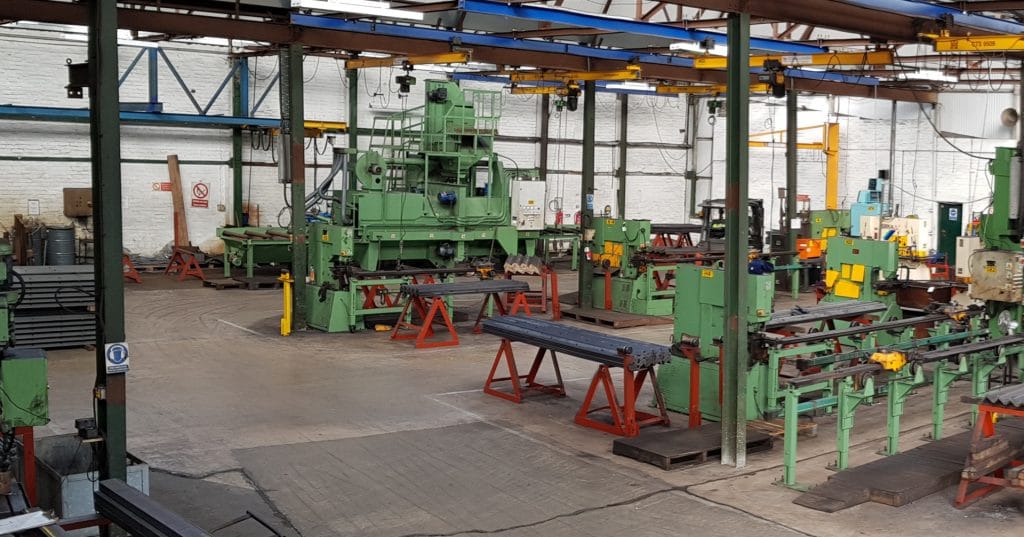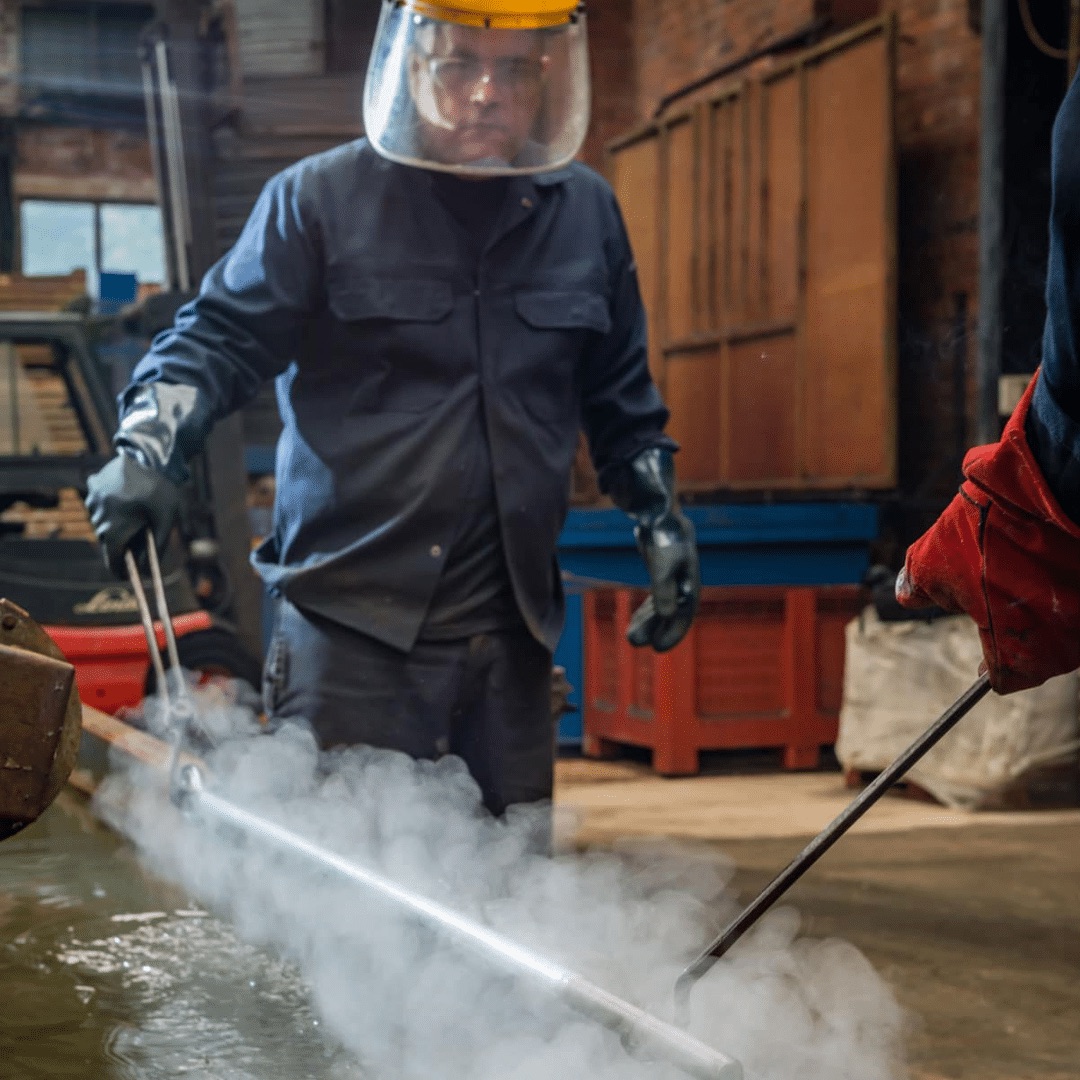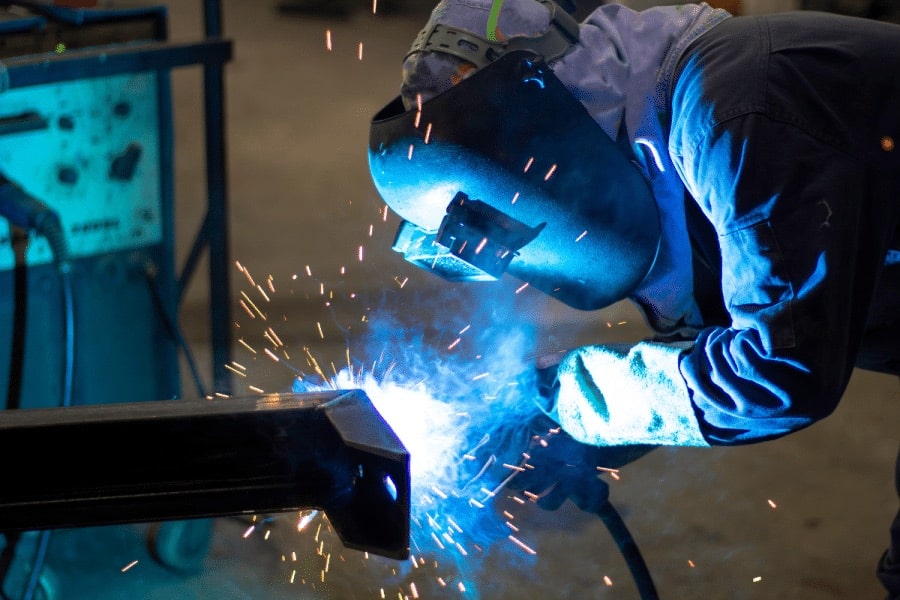What is Shot Blasting?
Shot blasting is a powerful surface treatment method that involves propelling abrasive material at high speed onto a target surface using centrifugal force. A rapidly spinning wheel or similar device launches the abrasive particles often referred to as “shot” with enough energy to clean, smooth, or prepare the surface. The name “shot blasting” comes directly from this gun like action of firing particles against the material.
Because the process is highly forceful and abrasive, it’s most effective on large, dense objects that require heavy-duty treatment. A common example is preparing steel sections by stripping away rust, scale, or old coatings before applying protective finishes such as galvanization. This ensures a clean, uniform surface that improves adhesion and extends the lifespan of the treated material.
Due to the sheer power of the technique, shot blasting must be carried out in a controlled environment, typically inside a reinforced, enclosed unit. This prevents stray particles from causing unintended damage and ensures operator safety. The controlled setup also allows for precision, making sure the blasting power is applied only where it’s needed.

Before the rise of shot blasting, sandblasting was the most common abrasive treatment. Sand was an attractive option because it was cheap, abundant, and easy to source.
However, it came with some serious drawbacks.
Moisture in the sand often made it difficult to spread consistently using compressed air, reducing efficiency. More importantly, traditional sand carried significant health risks. Many types of blasting sand contained high levels of silica, which, when inhaled, could lead to severe respiratory problems, including silicosis and even lung cancer.
Advancements in technology gradually exposed these limitations, and sandblasting began to lose ground to safer, more effective alternatives. While sandblasting relies solely on compressed air, modern techniques like shot blasting harness centrifugal force, which delivers greater versatility, higher power, and a more uniform finish.
That said, sandblasting still has its place even today, over 200 years after its invention. Because it uses less force than shot blasting, it’s gentler on surfaces and can be applied with handheld nozzles for precise, controlled work. This makes it ideal for more delicate materials, such as glass or softer metals, where achieving a smooth finish without damage is critical. The effect is comparable to sanding by hand, but much quicker and more efficient.
In contrast, shot blasting is the go to choice for tougher jobs. Using heavy duty abrasive materials like steel shot, it delivers the power needed to strip rust, scale, or old coatings from dense surfaces such as steel sections. This makes it the preferred solution for large scale, heavy duty applications where strength, speed, and thoroughness matter most.
Find out more about shot blasting with B.B. Price and invest in shot blasting near me today.
advantages of shot blasting
-
Efficient Surface Cleaning: Shot blasting quickly removes rust, scale, paint, and other contaminants from metal surfaces, leaving them clean and ready for finishing or coating.
-
Improved Surface Strength: The process creates a slight compressive stress on the surface, which can help reduce fatigue and improve the durability of the material.
-
Versatility: It can be used on a wide range of materials, from steel and aluminum to concrete, making it suitable for both industrial and construction applications.
-
Consistent Results: When done in a controlled environment, shot blasting produces a uniform finish across large surfaces, which is often more reliable than hand sanding or other abrasive methods.
-
Time-Saving for Large-Scale Operations: Compared to manual cleaning or sanding, shot blasting is much faster for large components or long production runs.

disadvantages of shot blasting
-
High Initial Cost: The equipment for shot blasting, enclosed units, blasting wheels, and recovery systems, can be expensive to purchase and install.
-
Safety Concerns: The high-speed abrasive material can cause injury if not properly contained. Protective measures and controlled environments are essential.
-
Surface Limitations: Extremely delicate or fragile materials may not withstand the force of shot blasting without damage, making it unsuitable for some applications.
-
Energy and Maintenance Intensive: The machinery requires regular maintenance and consumes significant energy during operation, adding to operational costs.
-
Noise and Dust: Shot blasting can be very loud and generate dust, necessitating soundproofing and ventilation systems to protect workers and the environment.

choose b.b price for shot blasting
Shot blasting is a powerful and versatile surface treatment technique that has stood the test of time in heavy-duty industries.
By propelling abrasive materials at high speed using centrifugal force, it effectively cleans, polishes, and prepares surfaces for finishing, offering results that are consistent, efficient, and durable.
Compared to older methods like sandblasting, shot blasting delivers greater force, better coverage, and improved efficiency, making it the preferred choice for dense materials such as steel and other robust surfaces.
While it comes with considerations like higher initial costs, safety precautions, and maintenance needs, the benefits, speed, reliability, and enhanced surface strength, often outweigh these challenges, particularly in industrial and large scale applications.
Ultimately, shot blasting remains an indispensable tool for anyone looking to achieve strong, clean, and professionally finished surfaces, whether in manufacturing, construction, or metalwork. For tougher jobs that require precision and durability, few surface treatments can match its effectiveness.
Find out more about shot blasting with B.B. Price and invest in shot blasting near me today.
